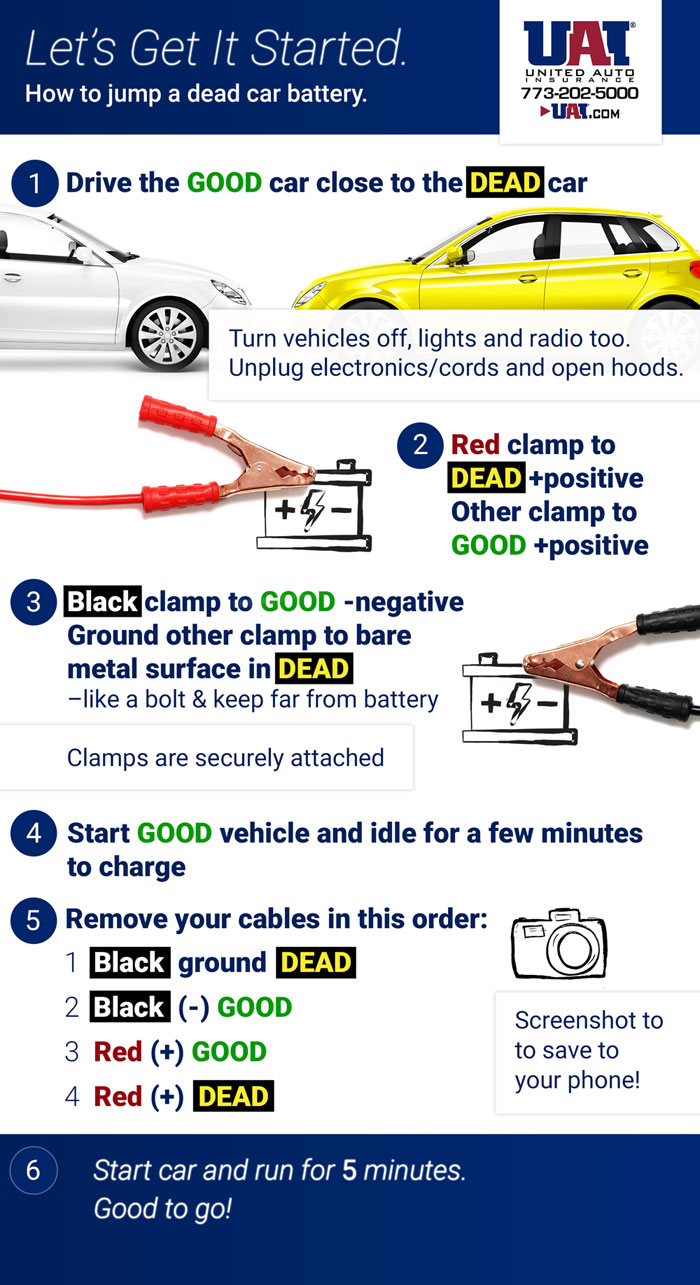Imagine this: you’re at the grocery store, ready to head home with your bags full of goodies, when you turn the key in the ignition and hear nothing but the dreaded silence․ Your heart sinks․ Your car battery is dead․ But fear not! A jumpstart can bring your car back to life in just a few minutes․ In this guide, we’ll walk you through the process step-by-step, with some tips and tricks to make the experience as smooth as possible․
What You’ll Need
Before diving into the jumpstart, let’s gather the essentials:
- Jumper Cables: A set of heavy-duty jumper cables is crucial․ Look for cables that are at least 4 to 6 gauge․
- A Working Vehicle: You’ll need another car with a working battery to jumpstart your dead battery․
- Safety Gear: Gloves and eye protection are recommended to keep you safe from any accidental sparks․
Step 1: Positioning the Vehicles
To ensure a successful jumpstart, follow these positioning tips:
- Park the working vehicle next to the dead vehicle, ensuring they are close enough for the jumper cables to reach both batteries․
- Turn off both vehicles and remove the keys․
- Make sure both cars are in park or neutral with the parking brakes engaged․
Step 2: Identifying Battery Terminals
Before connecting the cables, it’s essential to identify the battery terminals:
- Positive Terminal (+): Usually marked with a red cover or a “+” sign․
- Negative Terminal (-): Typically marked with a black cover or a “-” sign․
Step 3: Connecting the Jumper Cables
Now it’s time to connect the jumper cables․ This is the heart of the jumpstart process:
- Red to Dead: Start with the red jumper cable and connect one end to the positive terminal of the dead battery․
- Red to Donor: Connect the other end of the red cable to the positive terminal of the working battery․
- Black to Donor: Take the black jumper cable and connect one end to the negative terminal of the working battery․
- Black to Ground: Finally, connect the other end of the black cable to an unpainted metal surface on the dead vehicle (such as a bolt or the engine block)․ This reduces the risk of sparks near the battery․
Step 4: Starting the Cars
With the cables securely connected, it’s time to bring your vehicle back to life:
- Start the engine of the working vehicle and let it run for a few minutes to charge the dead battery․
- After a few minutes, try starting the dead vehicle․ If it doesn’t start, wait a bit longer and try again․
Step 5: Disconnecting the Cables
Success! Your car is running․ Now, it’s time to safely disconnect the jumper cables:
- Remove the black cable from the unpainted metal surface of the dead car first․
- Next, remove the black cable from the working battery․
- Then, take off the red cable from the working battery․
- Finally, remove the red cable from the dead battery․
Step 6: Letting Your Car Run
After successfully jumpstarting your car, let it run for at least 15-30 minutes․ This allows the alternator to charge the battery sufficiently․ If your car doesn’t start again after being turned off, you may need to replace the battery․
Tips and Precautions
Jumpstarting a car is a straightforward process, but here are some tips to ensure safety and effectiveness:
- Check for Damage: Before jumpstarting, inspect both batteries for any damage or corrosion․
- Read the Owner’s Manual: Consult your vehicle’s manual for specific instructions or precautions regarding the battery․
- Be Mindful of Sparks: Always connect the cables in the correct order to avoid sparks and potential battery explosions․
Jumpstarting a car doesn’t have to be a daunting task․ With the right tools and knowledge, you can bring your vehicle back to life in no time․ Just remember to follow this step-by-step guide, stay safe, and keep calm․ Next time you find yourself in a similar situation, you’ll be ready to tackle it like a pro!
Happy driving!

